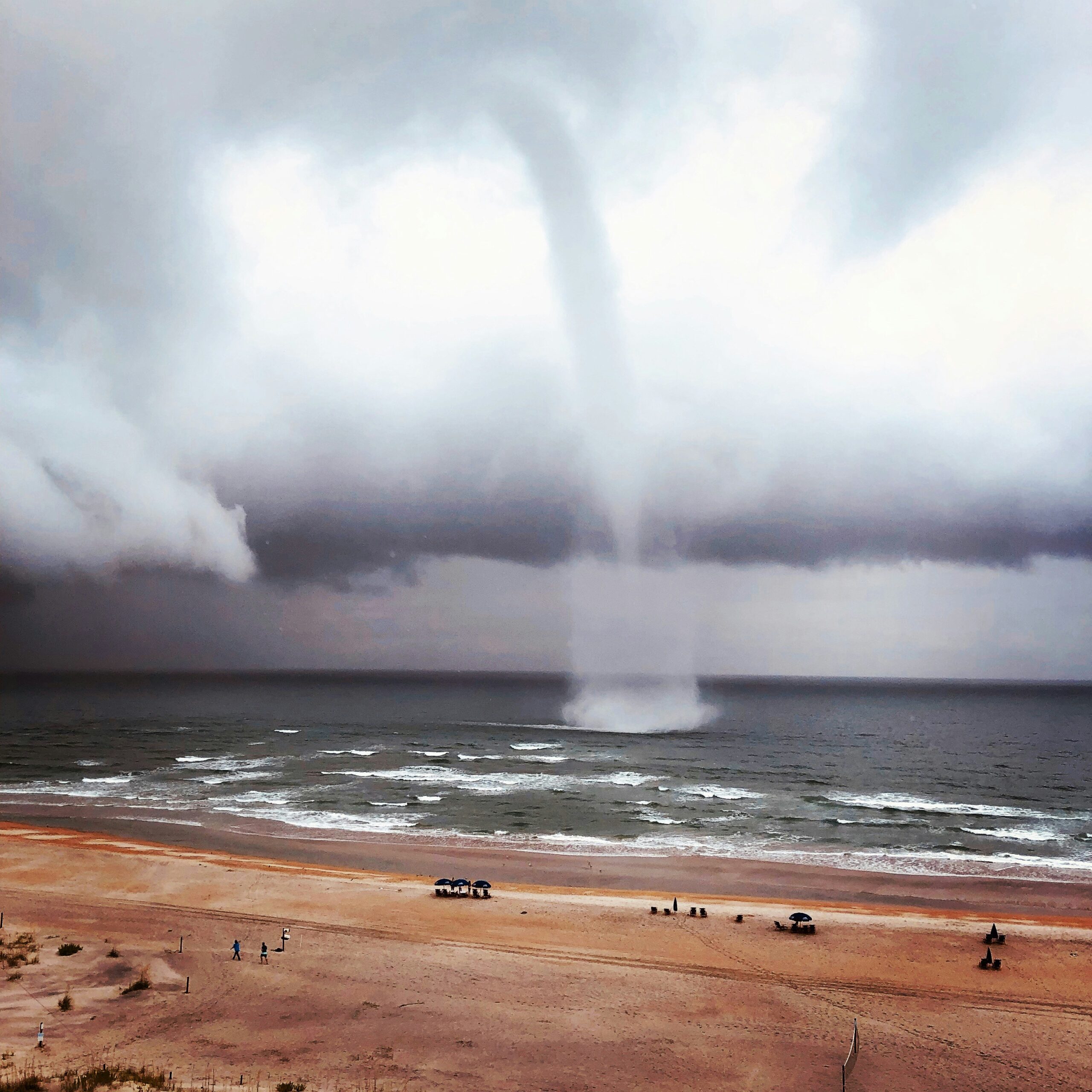What Is A Waterspout?
A waterspout is the name given to a column of rotating air that occurs over water. There are two types of waterspouts: fair-weather waterspouts, which are dangerous due to the fact that they can form unexpectedly, and tornadoic waterspouts, which are scary due to the raw power that they have.
What Is A Fair-Weather Waterspout?
A fair-weather waterspout can develop in otherwise completely calm conditions and usually begins to form with wind blowing at or near the surface of the water, and the whirling winds climb upwards. Looking at the water, you will see a light-colored disc with a darker disc around it. As both start to spiral, sea spray will spiral around them, forming a spinning vortex that transitions from water to cloud, creating the water spout.
Despite the fact that they tend to be less powerful, often not able to climb above F0 on the Fujita scale, or EF0 of the advanced Fujita scale, and often do not move very quickly or last very long. However, all waterspouts, even the tamest-looking fair-weather waterspouts, should be treated as dangerous, since they could begin moving quickly, and some do become more powerful and/or begin to move quickly.
What Is A Tornadic Waterspout?
A tornadic waterspout is a waterspout that forms in the same way as a tornado. It can either be due to superstorm clouds forming over water or a traditional land tornado moving over water. These are generally much more dangerous to encounter. Although you will have some warning over them appearing, due to the more adverse conditions they form in, or outright tornado warnings, they are more powerful and faster-moving on average. To be safe, you should avoid any areas with such conditions.
What Is The Difference Between A Regular Tornado And A Waterspout?
The difference between the two is a bit different, depending on whether we are talking about a fair-weather waterspout or a tornadic waterspout. The difference between a regular tornado and a tornadic waterspout is simply the location: whether it is over water or dry land. However, a fair-weather waterspout, due to its different formation, can form out of nowhere and catch people off guard, which can be especially dangerous if it moves over land.
Is A Waterspout Dangerous?
Yes, a waterspout can be very dangerous. Waterspouts are known to be able to flip over small boats and destroy other craft, such as buoys. While large ships are generally thought to be safer, it is best not to risk it and instead stay away from the storm if possible.
Is A Waterspout As Powerful As Other Tornadoes?
Generally, a waterspout is not as powerful as a traditional tornado, with most rarely moving beyond the lowest tiers of tornadoes, but just because they’re not quite as powerful doesn’t mean that they’re harmless. In fact, they are still very dangerous.
Examples of dangerous waterspouts include the 1926 Encarnacion tornado in Paraguay, which started off as a waterspout, but came onto land and became an F4 tornado, killing over 300 people, making it the deadliest tornado in South American history. There was also the 2011 Goderich tornado, which became an F3 tornado after it left Lake Huron, killing a crane operator. The Grand Harbour of Malta Tornado in the 1550s and killed hundreds of people, many of whom were on capsized ships, has been retroactively ranked as an F3 tornado. Waterspouts rarely reach beyond F1 or EF1 status when still out in water, even when tornadic.
While in the water, it is much harder for a waterspout to reach higher speeds, making them less powerful on average than standard tornadoes. However, they are still very deadly, and it is possible at any time to
Is A Waterspout Deadly?
Yes. The earlier example of the Malta tornado shows the power of a waterspout, which killed hundreds of people by capsizing boats. Even with all our modern warnings and updates to ship technology, boats are still very vulnerable to these storms and should be taken seriously.
Can A Regular Tornado Become A Waterspout?
Yes, if a tornado goes from land to water, it becomes a tornadic waterspout.
Can A Waterspout Become A Regular Tornado?
Yes, any waterspout, whether tornadic or fair weather, if it moves onto land, becomes a standard tornado, and a tornado warning is issued locally.



